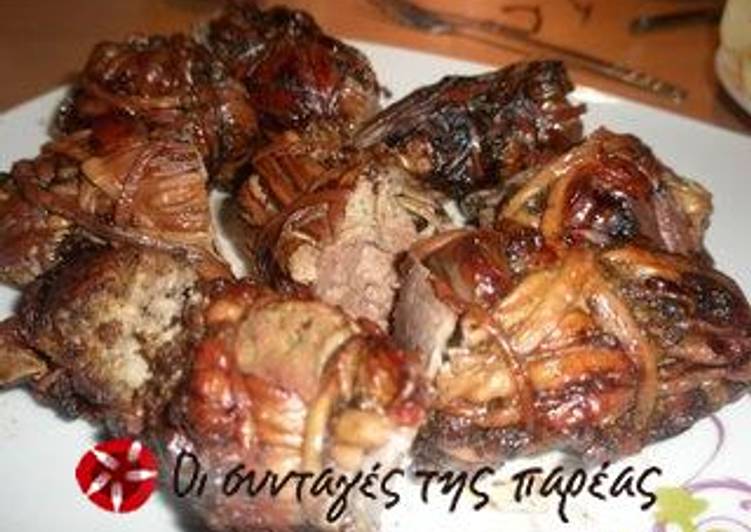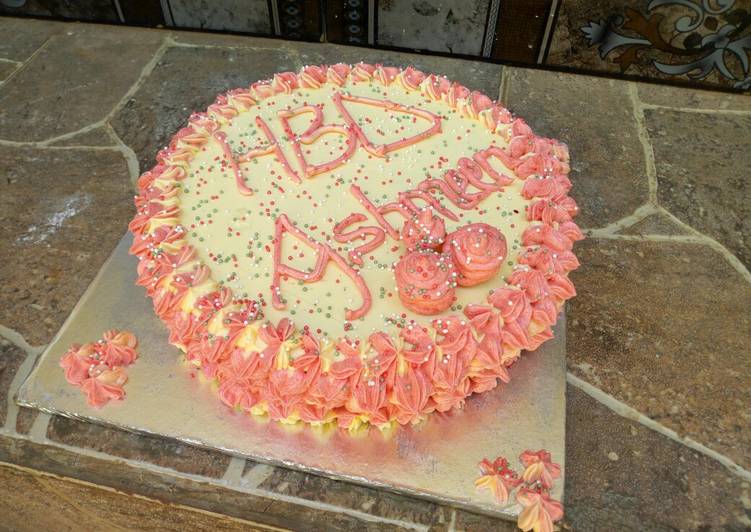
Hey everyone, it’s Jim, welcome to our recipe page. Today, we’re going to prepare a distinctive dish, katina's kokoretsi. It is one of my favorites. For mine, I am going to make it a little bit unique. This will be really delicious.
Now, the fire plays an important role in the success of the kokoretsi. The Katinas believe this message is worth living for. Through their music and their actions they strive to embody this love.
Katina's kokoretsi is one of the most favored of current trending meals in the world. It is enjoyed by millions every day. It’s simple, it’s fast, it tastes yummy. Katina's kokoretsi is something which I have loved my whole life. They’re fine and they look fantastic.
To begin with this recipe, we have to prepare a few components. You can cook katina's kokoretsi using 6 ingredients and 21 steps. Here is how you cook it.
The ingredients needed to make Katina's kokoretsi:
- Prepare 1 lamb offal, about 1 kg with the heart, lungs, spleen, caul fat and sweetbreads
- Get 3 large intestines of about the same weight as our offal
- Make ready 3 cloves garlic
- Get oil
- Make ready salt, pepper
- Take oregano
Watch Queue Kokoretsi is a tasty dish of Easter holidays and spring. We give you all the secrets you need to cook a delicious meal. Although its a "forbidden fruit" of gastronony, after the decision of the Europian Union, we share an original recipe with you since when something gets banned it tastes too good. In Greece we enjoy cooking it passionately.
Instructions to make Katina's kokoretsi:
- Wash the offal thoroughly and cut it in pieces (not very small, about as big as an egg, maybe slightly bigger).
- Wash the intestines thoroughly, as well. This is the most demanding and tiresome part of the whole process.
- After washing them with plenty of running water, turn them inside out so that they are thoroughly cleaned on the inside, too. How? I have learned a method, that of the "knitting needle", but I know that there are others around. Use a knitting needle to push the edge of an intestine towards its interior and carry on pushing untill all the length of the intestine is passed through to the other side. This way, the intestine is turned inside out and you can carry on with washing it. If the intestines come from a suckling lamb this process can be "compromised" a bit.
- If you don't start immediately the preparation of the kokoretsi, you should keep the clean intestines in a bowl with water and vinegar (or lemon). This way, they don't smell and they whiten.
- Use another bowl to marinate the pieces of offal.
- In a food processor, blend the garlic cloves with the oil (1 tbsp, maybe a bit more).
- Salt the offal with 2-3 pinches of salt and pepper.
- Add a bit of oregano (be careful, too much will darken the meat)
- Add the garlic pesto (about 2-3 tsp).
- Mix thoroughly so the spices go everywhere.
- Leave the offal to stand for a while to marinate.
- Next, start skewering the offal, alternating hearts, spleens, sweetbreads, caul fat etc., pressing lightly and making sure that the pieces stay together but not too tight.
- When you are done skewering all the pieces, you have to cover the offal with the intestines.
- At first, start by tying one end of the intestine at the lower end of the offal. Take it upwards and after securing it on the top part, take it donwards again. And once more upwards and downwards a couple of times, turning the skewer lightly so that the "routes" don't coincide and all the areas of the kokoretsi are covered. In this way, you hold the pieces together and they don't move.
- Continue going up and down, this time turning the skewer around and making sure that the intestines cover all the surface of the kokoretsi, wrapping all the pieces that stick out.
- As you go on and the kokoretsi is wrapped you will notice pieces of meat that escape your attention and stick out of the cover you are making. With the appropriate moves and turning the skewer, make sure to wrap them too.
- When the length of the first intestine is done, tie another at one end of the kokoretsi and repeat the wrapping until the offal is fully covered.
- Some people, instead of doing that for each intestine, they tie them all together at one end of the kokoretsi and they continue wrapping it with the bunch of the intestines making sure that they are always spread and don't fall on top of one another.
- When you finish wrapping it, leave the skewer vertical (and covered) for a couple of hours (even overnight, if you have the time) before you place it over the fire so that the meat lets its excess liquids drain.
- Now, the fire plays an important role in the success of the kokoretsi. That is what determines the roasting time (for a kokoretsi that is as thick as that in the video, about 8cm, it took about 2,5 hours) but also how juicy or dry it will be.
- We roast our kokoretsi over a "good" fire, high at first, so that it slowly cooks on the inside and towards the end, lower it so that it gets that crispy, crunchy exterior while staying juicy inside.
Roasted Kokoretsi - A traditional dish from the Balkans and Greek regions consisting of sweetbreads, recesses and innards seasoned, and roughly tied and wrapped in viscera. Put in platter, oil the kokoretsi pieces, season with extra salt, pepper and oregano and serve. via www.greek-recipe.com. Kokoretsi is a meal that is traditionally made and served at Easter, along with Lamb on the Spit. Jim Katinas Open to me the doors of repentance, life-giver, for my spirit rises to pray toward your holy temple, bearing the temple of my body completely defiled, but in your compassion purify me by the loving kindness of your mercy.-Hymn from the Triodion (chanted in matins services). Τῆς μετανοίας ἄνοιξόν μοι πύλας . The Katinas are a contemporary Christian music group.
So that’s going to wrap it up for this special food katina's kokoretsi recipe. Thank you very much for reading. I am confident that you can make this at home. There is gonna be interesting food in home recipes coming up. Don’t forget to bookmark this page on your browser, and share it to your loved ones, colleague and friends. Thank you for reading. Go on get cooking!


